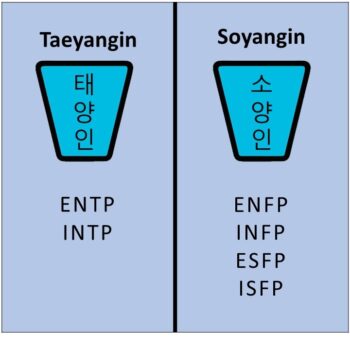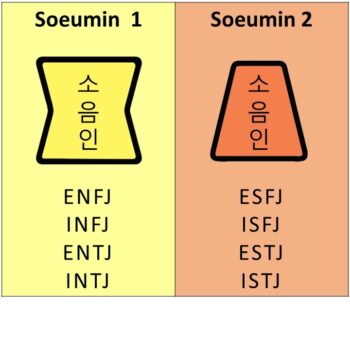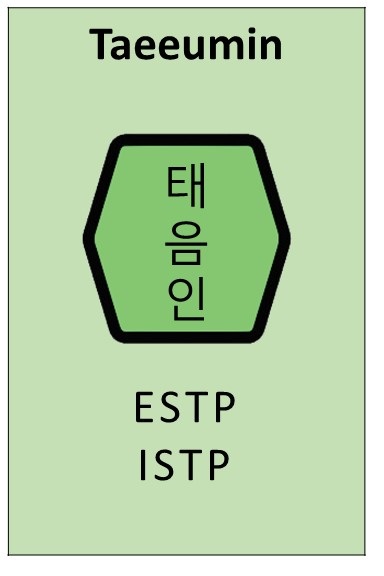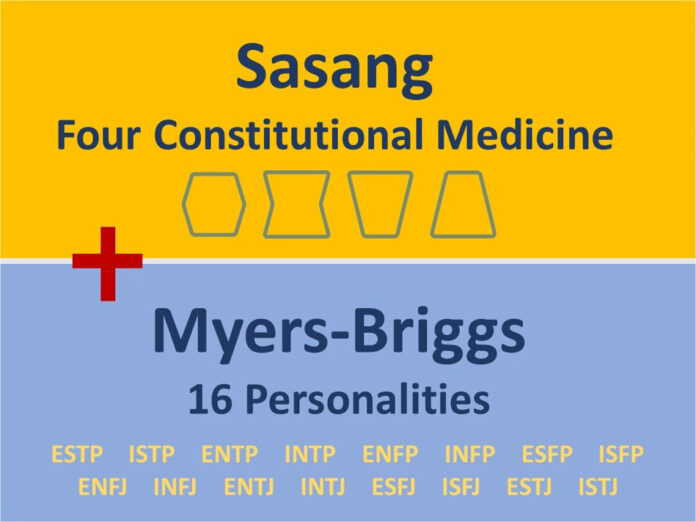A Taeyangin likely has (T) Thinking, not (F) Feeling.
By David Lee L.Ac
Western Myers-Briggs 16 personality types (MBTI) conveniently identify the Sasang 4 constitutions. Developed in the 1940s from the work of a famous psychoanalyst Carl Jung, it amply describes the personality characteristics more than Sasang has. MBTI is a reliable way to identify the four constitutions of Taeyangin, Soyangin, Taeumin, and Soeumin.
MBTI consists of 8 characteristics that make up 10 temperament types. The four opposing pairs are (E) Extrovert – (I) Introvert, (N) Intuitive – (S) Sensing, (F) Feeling – (T) Thinking, and (J) Judging – (P) Perceiving. Although developed independently in the west, it has the same meaning as the words used in eastern medicine. (N) Intuitive is a Greater Yang and Damp. (S) Sensing is a Greater Yin and Dry. (J) Judging is a Lesser Yin and Cold. Lastly, (P) is a Lesser Yang and Hot.
There are many MBTI books, which describe these 8 functions in much detail.
(E) Extrovert is a person who gets energized by being around people. Hanging around with people all day gives them increased stamina. (I) Introverts like to spend more time alone, as the solitary times allow them to be replenished. (I) Introverts quickly get drained of energy when around people for too long. However, (E) and (I) are not distinguishing factors because they exist in all four Sasang constitutions.
(S) Sensing is characterized by an interest in knowing details, such as specifications and features. They like to know the exact pieces that make up the whole. Contrarily, an (N) Intuitive is interested in knowing the big picture, such as the whole that is bigger than the sum of its parts. The ample number of details can become easily boring for the (I) Intuitives.
(F) Feeling likes to process the world with emotion, where a heartfelt interaction is preferable. (F) Feelers are moody and emotionally moved. (T) Thinking likes to interpret the world with logic and rationality. They prefer to approach the world with the scientific process, and healthy skepticism as emotion can get in the way of properly knowing the facts.
(P) Perceiving is open-ended. (P) has a variety of interests and would prefer to defer deciding until the last minute. Hence, (P) is often late to an appointment. Furthermore, they take on interesting projects but leave many undone. When (P) is extreme, it displays attention deficit disorder. (J) is orderly because it likes to select the most important task early and is persistent until it is done. (J) is either early or on time to an appointment. When (J) is extreme, the person’s behavior is obsessive-compulsive with repetitive movements.

A Taeyangin is a combination of (N) and (P). A Taeyangin likely has (T) Thinking, not (F) Feeling.
A Soyangin’s type indicator is the same as Taeyangin, except that the (P) is primary and (N) is secondary.
There is also a second Soyangin, which has (P) as primary and (S). Both Soyangins have (F) Feelings.

There are two Soeumins. One Soeumin is (J) Judging primary and (N) Intuitive secondary.
The second Soeumin is (J) Judging primary and (S) Sensing secondary. Both have (J) Judging, a Cold type, as primary. And both have (F) Feeling or (T) Thinking.
Soeumin is stereotypically known as emotional and moody because of the (F) Feeling function. But many Soeumin is also (T) Thinkers, making them superior in analytical skills with less emotionality.

Taeeumins have (S) Sensing and (P) Perceiving. It allows them to know the details while being flexible with changes. With their (T) Thinking function, they take on the role of leading a group of people with courage, especially in times of uncertainty.
Personalities are not easily distinguished because we all have more or less of the eight characteristics. But there is a bar that delineates one opposing temperament function from another. Population statistics can help the differentiation. About 50% of the population is (S) Sensing, and the other half is (I) Intuitive. Furthermore, about 70% of females are (J), and 30% are (P). Contrarily, about 30% of males are (P) and 70% are (S). Lastly, about 40% is (T) Thinking and 60% (F) Feeling.
The west has contributed to the knowledge of constitutions. The east has the application of diet and herbal medicine. Both are unified for an even more accurate diagnosis with proven natural medicine. Constitutional medicine is now more reliable, predictable, and measurable.

































